Background:
This post discusses the installation and testing of a Mk8 PCV system on my Mk7 GTI.
For some time I have been using a catch can with my GTI. This was installed when the GTI was operating using an IS38 turbocharger. With that turbo, the car generated a large plume of white smoke after letting off the accelerator following a full-throttle pull.
I feared the turbocharger had failed the first time this occurred, and the catch can was a solution to avoiding the uncertainty of what the smoke might signal.
After following the work of Tony at Data Driven MQB I decided to implement some of the parts swaps he had made while researching the MK7 and MK8 PCV systems.
Sensor setup:
I already had a differential pressure gauge installed so I modified the oil cap to be able to measure pressure, and then made a fitting that would replace the oil dipstick to measure pressure too.

Next, running a line from the oil cap to the pressure sensor was easy.

An initial set of data was recorded with an APR Catch Can (no pictures of this).
Then I continued to install the Mk8 PCV system.
At first, this was without the “venturi” a line that siphons air from the charge pipe through a suction jet pump to increase the vacuum in the line that runs to the inlet elbow PCV port.
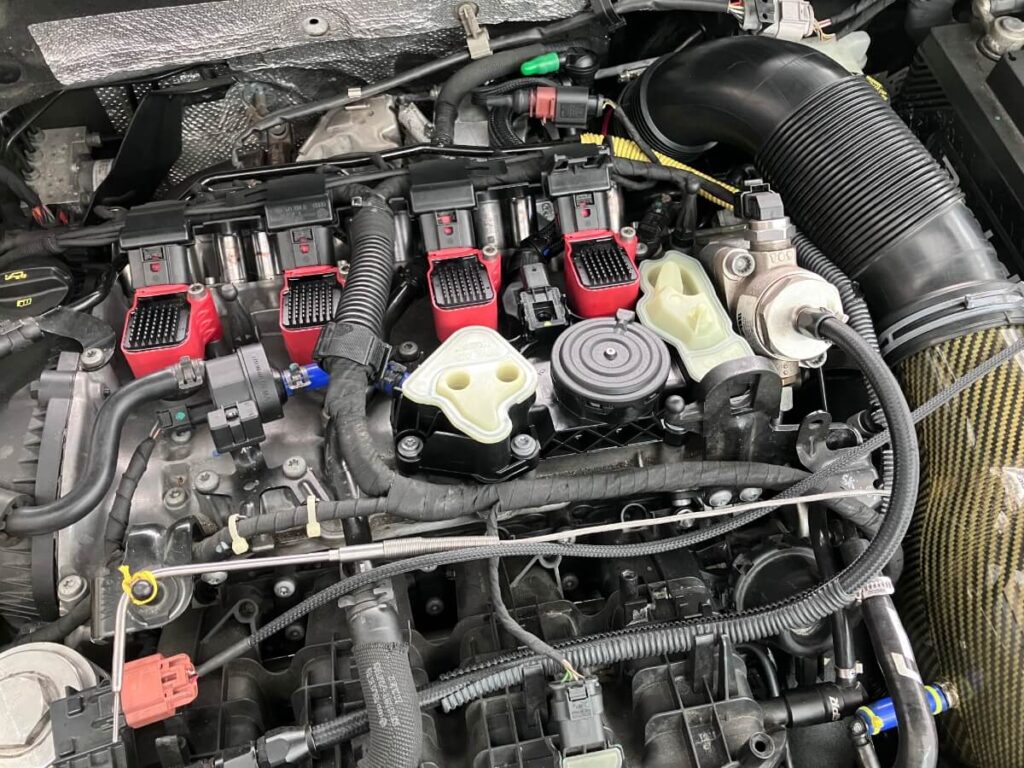
More data was recorded with this setup, swapping between the stock turbo inlet elbow and an MST aftermarket turbo inlet elbow.
APR Catch Can Data:
Note: Comp (psi) is air pressure at the turbocharger compressor outlet.
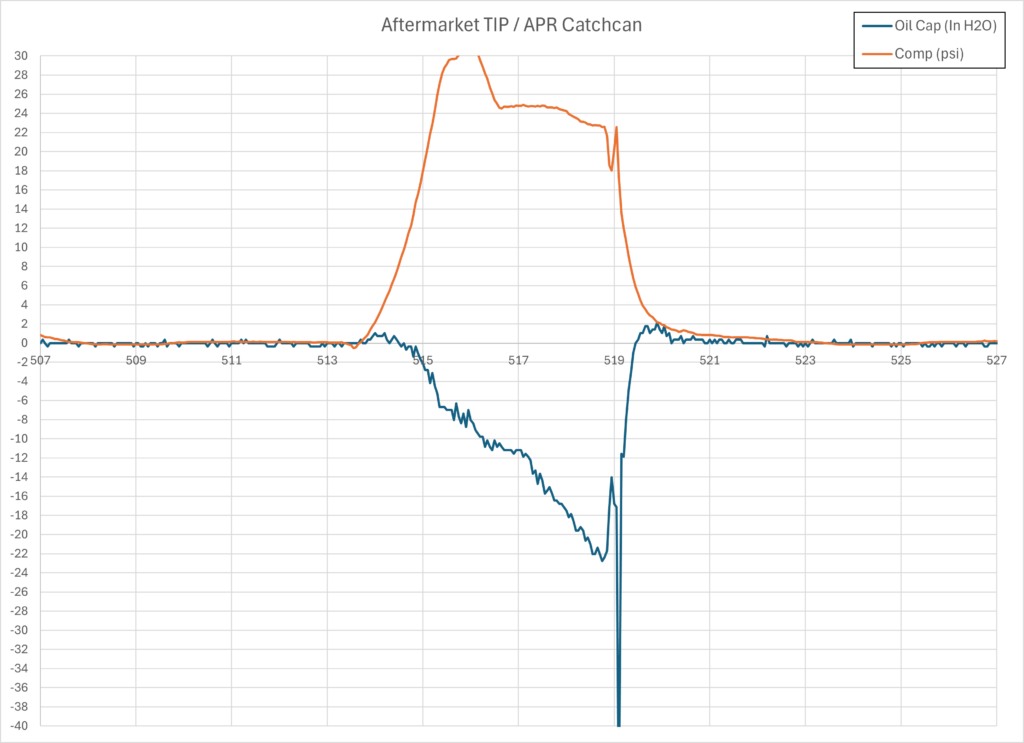

Mk8 PCV (No Venturi) Data:
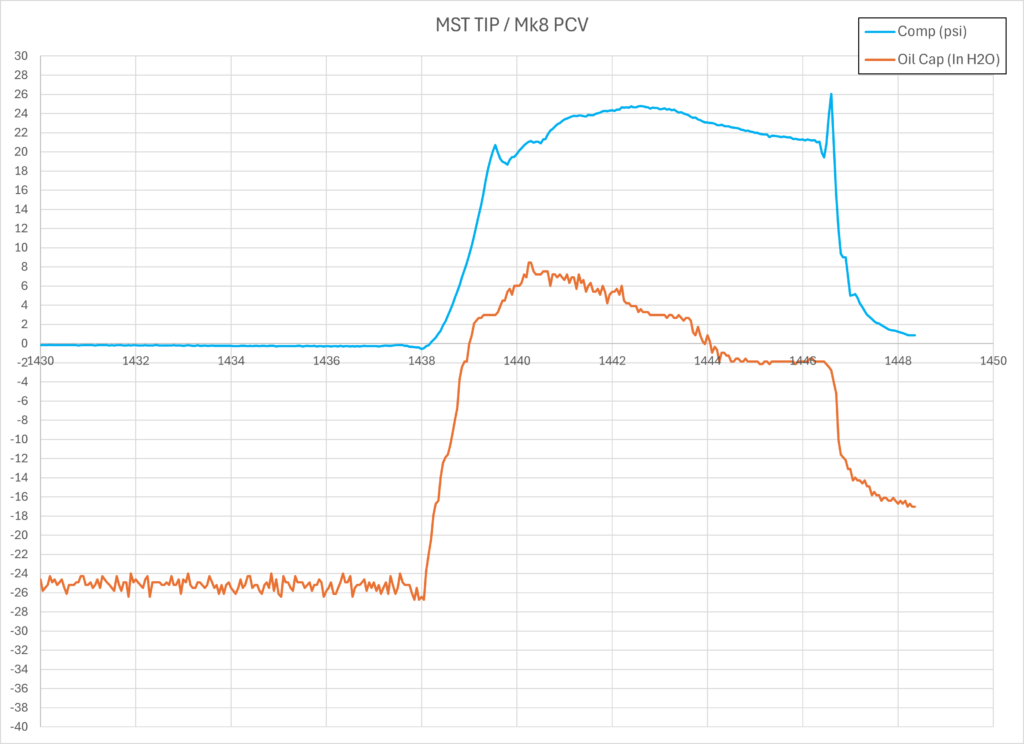

Mk8 PCV with Venturi Data:

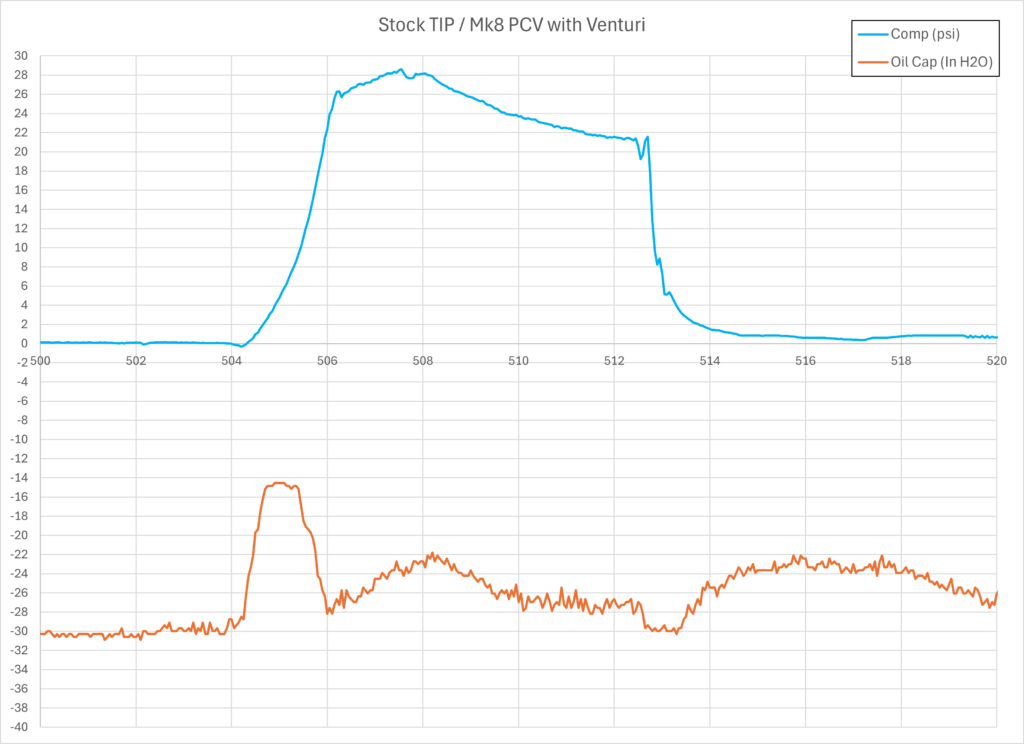
The following table summarizes the key results concerning operating pressure from the above charts:
| TIP | APR CC | MK8 PCV | MK8 PCV + Venturi |
|---|---|---|---|
| Stock (Cruise) | Zero | Vacuum | Vacuum |
| Stock (Full Throttle) | Vacuum | Vacuum | Vacuum |
| Aftermarket (Cruise) | Zero | Vacuum | Vacuum |
| Aftermarket (Full Throttle) | Vacuum | Positive | Vacuum |
Venturi effect:
This first chart shows the effect of the venturi on the average vacuum during a full-throttle pull using the stock TIP.
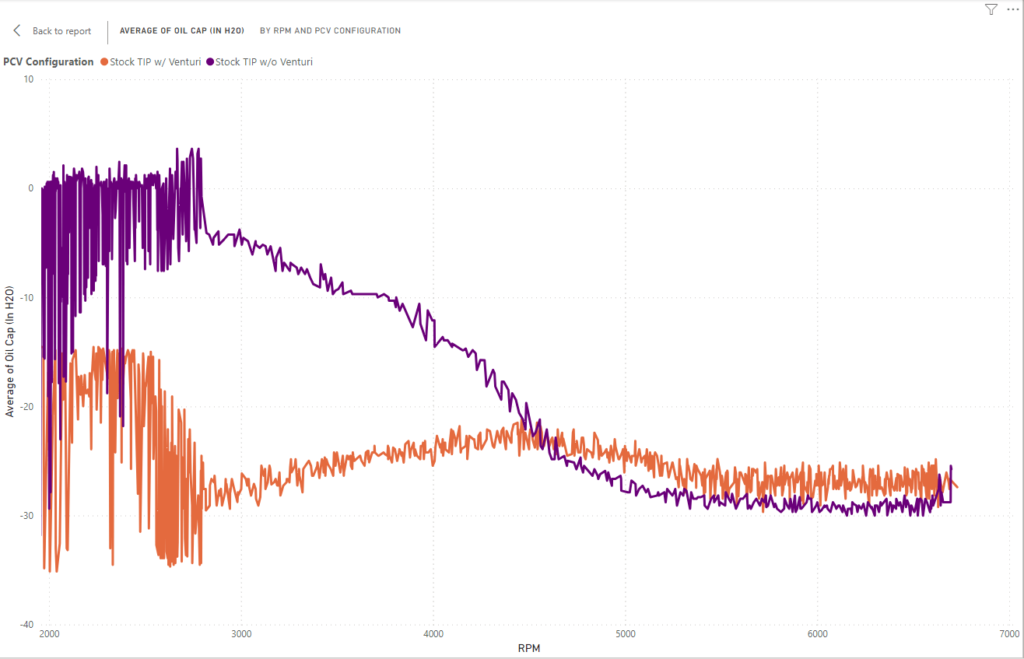
The next chart shows the effect of the venturi on the average vacuum during a full-throttle pull using the aftermarket MST TIP.

This chart compares the MST and Stock TIP without the venturi connected.
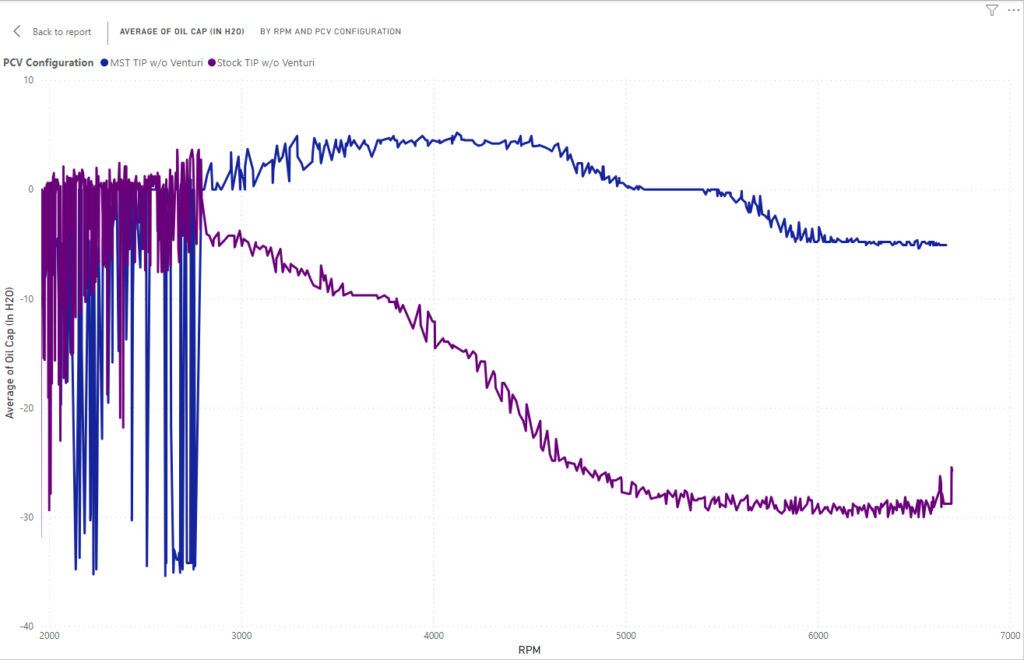
This chart compares the MST and Stock TIP with the venturi connected.
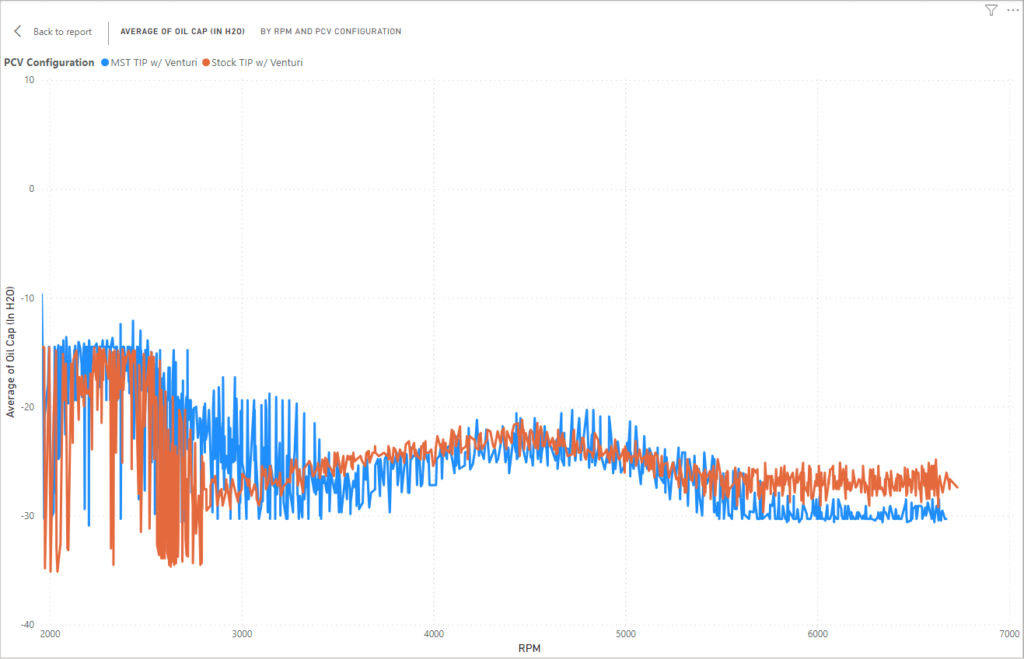
Venturi line effect:
For the venturi, I repurposed a compressor signal line (from the Audi B5 S4 TiAL 605 kit) that I hoped would limit the amount of pressure loss from the charge pipes.

The GTI has aFe Power charge pipes which have water-methanol injection bungs on the hot and cold side piping, which allowed me to use a source other than the 034Motorsport TMD.

A 034Motorsport TMD is installed on the turbo, but the two ports are already in use for measuring the temperature and pressure at the compressor outlet.

The line is run from the charge pipe up to the Mk8 PCV lines.
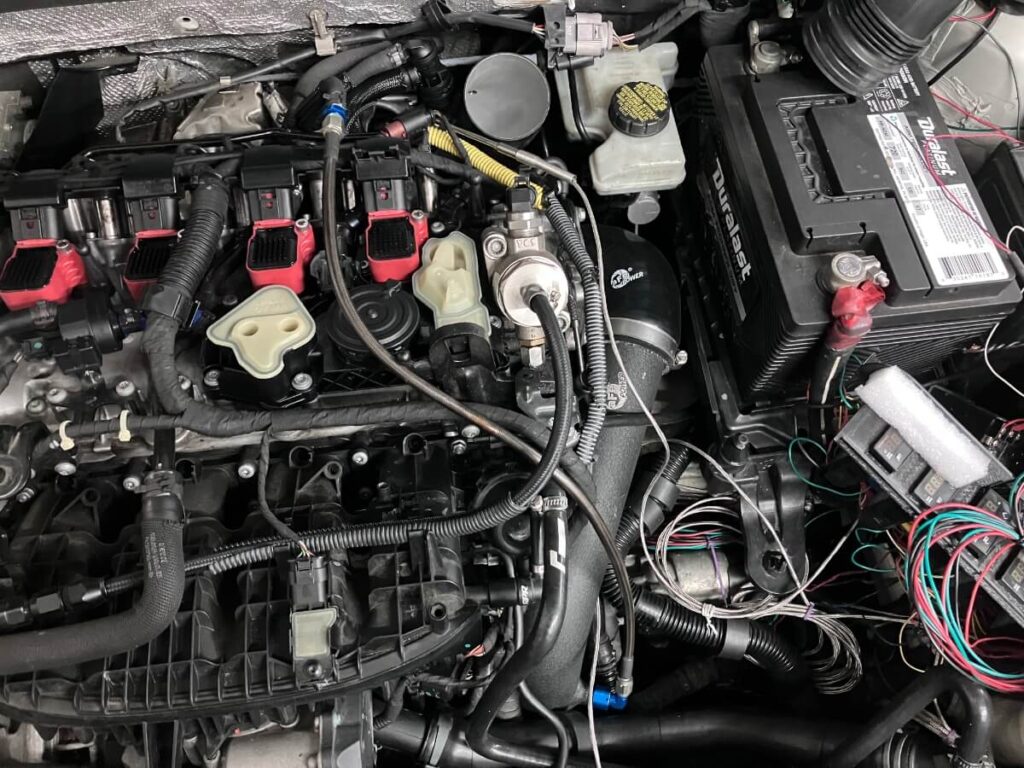
The TiAL signal line connects to an AN fitting that is inserted into the end of the PCV rubber hose.
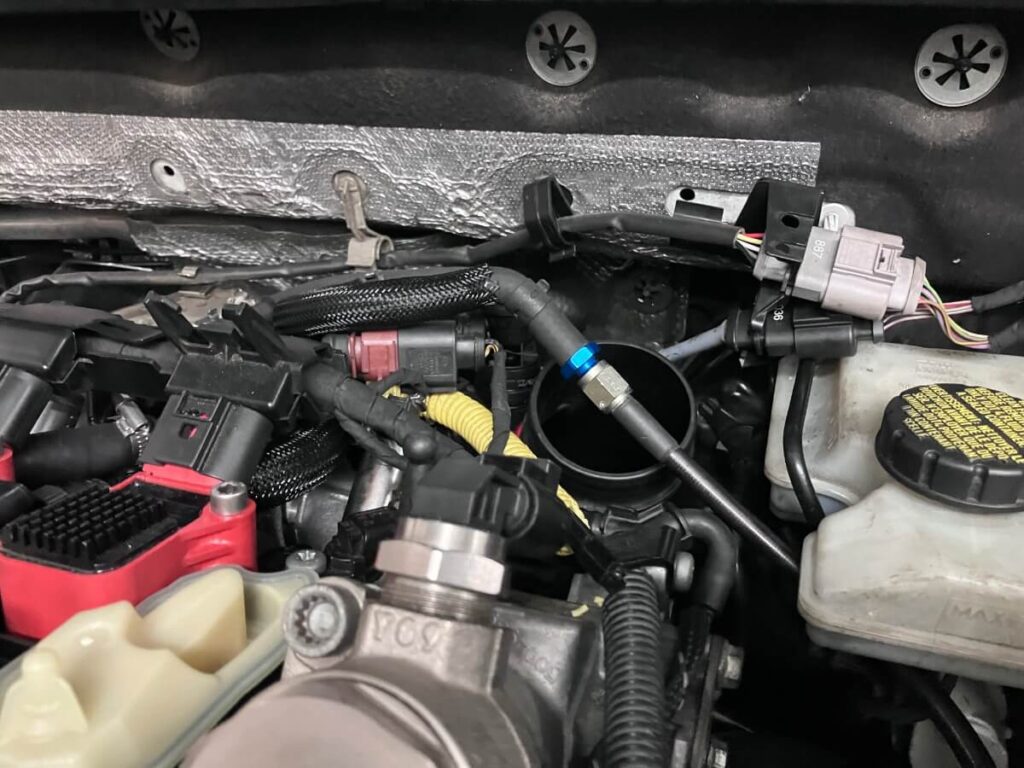
For the “no venturi” runs the lines are disconnected and capped off.
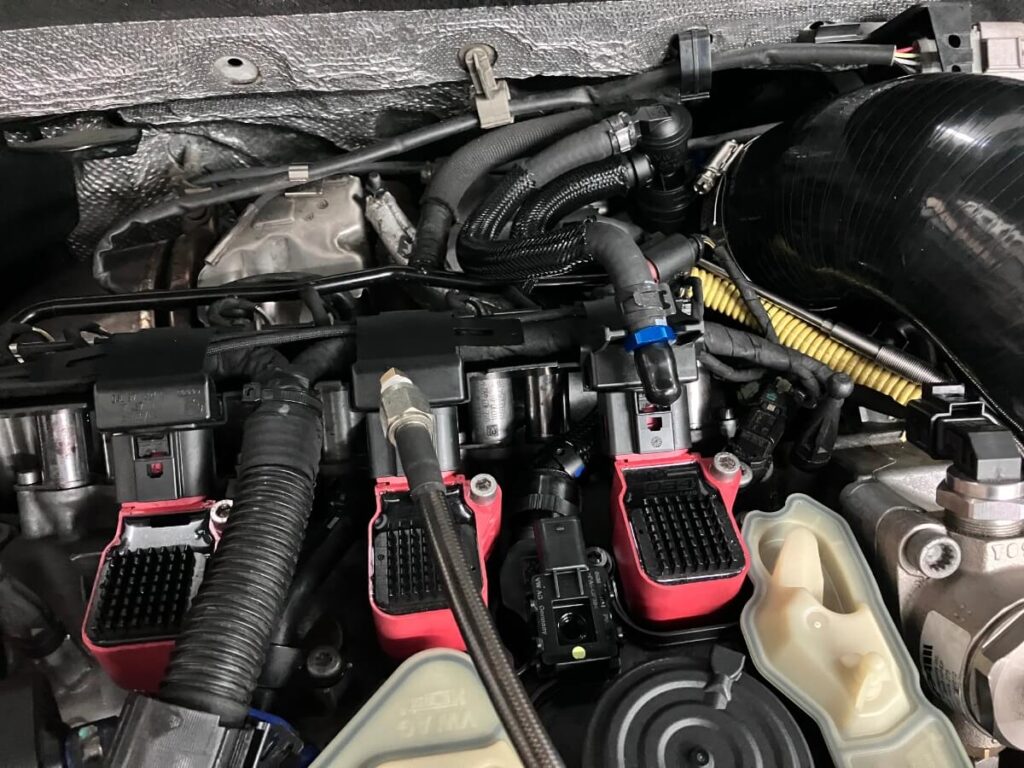
Looking at the turbocharger wastegate duty cycle with and without the venturi connected there is no significant change. This is while using an IHI IS20 turbocharger.
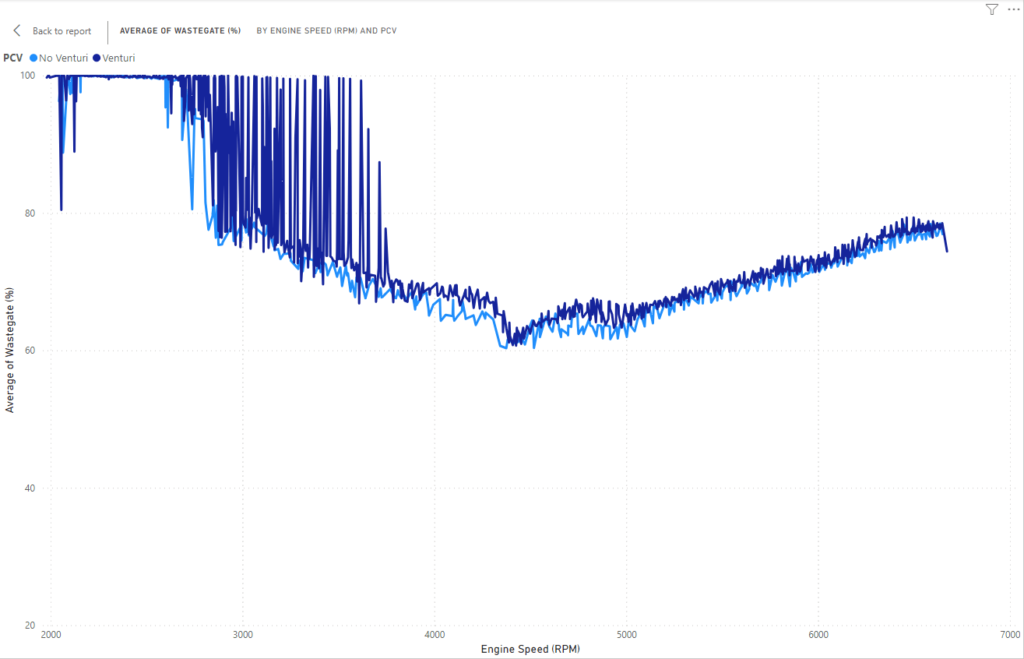
The small increase in WGDC when the venturi is attached is likely a result of a slightly high air temperature going into the turbocharger during the runs when the venturi was connected:
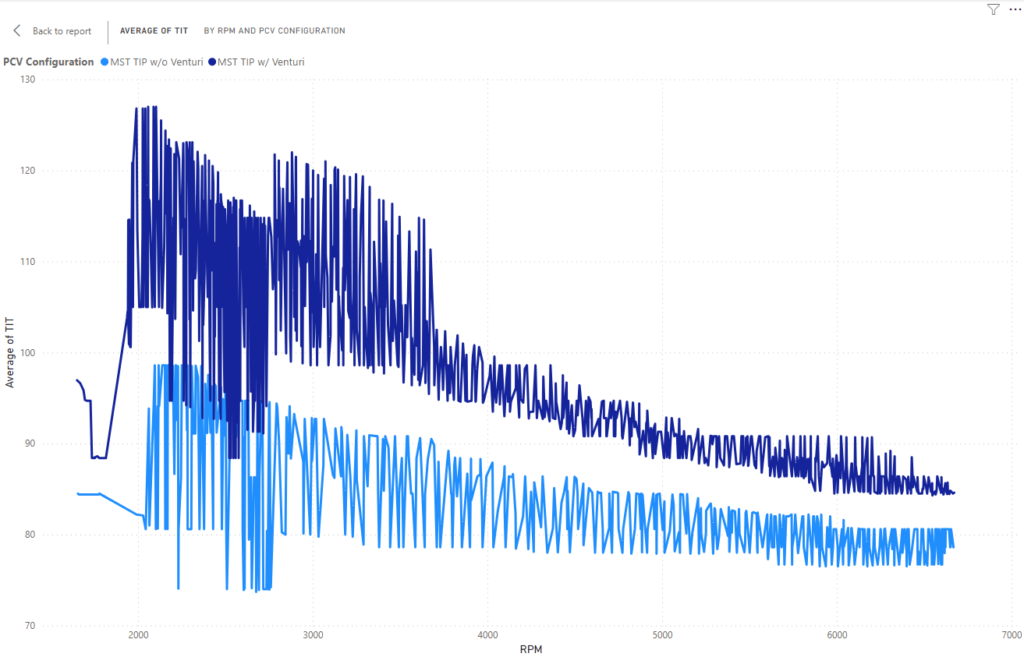
Also, the intake air temperature is slightly higher during the runs with the venturi attached.
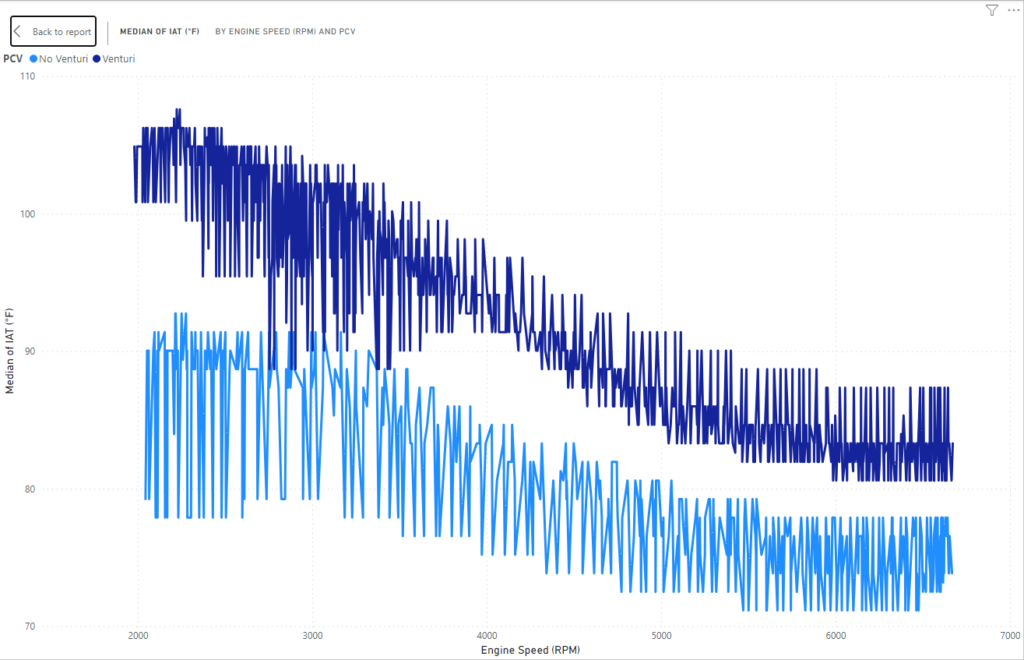
Boost onset is slightly slower in the venturi pulls, but this difference is likely partly attributed to the higher turbo inlet air temperature.

Thus far there isn’t any indication that the turbocharger performance is adversely affected when the venturi is hooked up.
Conclusions:
Installation of the Mk8 PCV on the Mk7 GTI did not cause any adverse effects for the Mk7 GTI.
Part numbers:
- PCV Valve Hose: 06K-103-210-D
- piazzavwparts.com $143 (free shipping)
- Engine Crankcase Vent Valve (PCV Valve): 06Q-103-495-B
- piazzavwparts.com ($67)
- Sensor bung: 06M-906-094
Pro Tip:
As Tony points out in one of his videos (link here – about the 9-minute mark), using a flat-head screwdriver to raise the edge of the PCV connector that attaches to the TIP is key to removing the PCV line from the TIP PCV port. Without using this trick, I don’t think the two pieces can be separated without breaking something.

Great info and thanks for comparing the apr catchcan. Was it the full apr plate? Seems like it actually did decently vs the stock mk7 pcv according to Data driven’s data. What’s your take?
You’re welcome! Yes, it was the full APR CC setup. The one variation I did not try was to reinstall the Mk7 PCV. I’ve not looked at that particular comparison on Tony’s website.
Thnx for the reply! I appreciate you taking the time to dish out your data on things. Thank you.
With the Golf MK8’s new PCV, will there no longer be carbon buildup on the intake valves?
Greetings from Portugal
I do not know what effect the Mk8 PCV system will have on the carbon buildup.